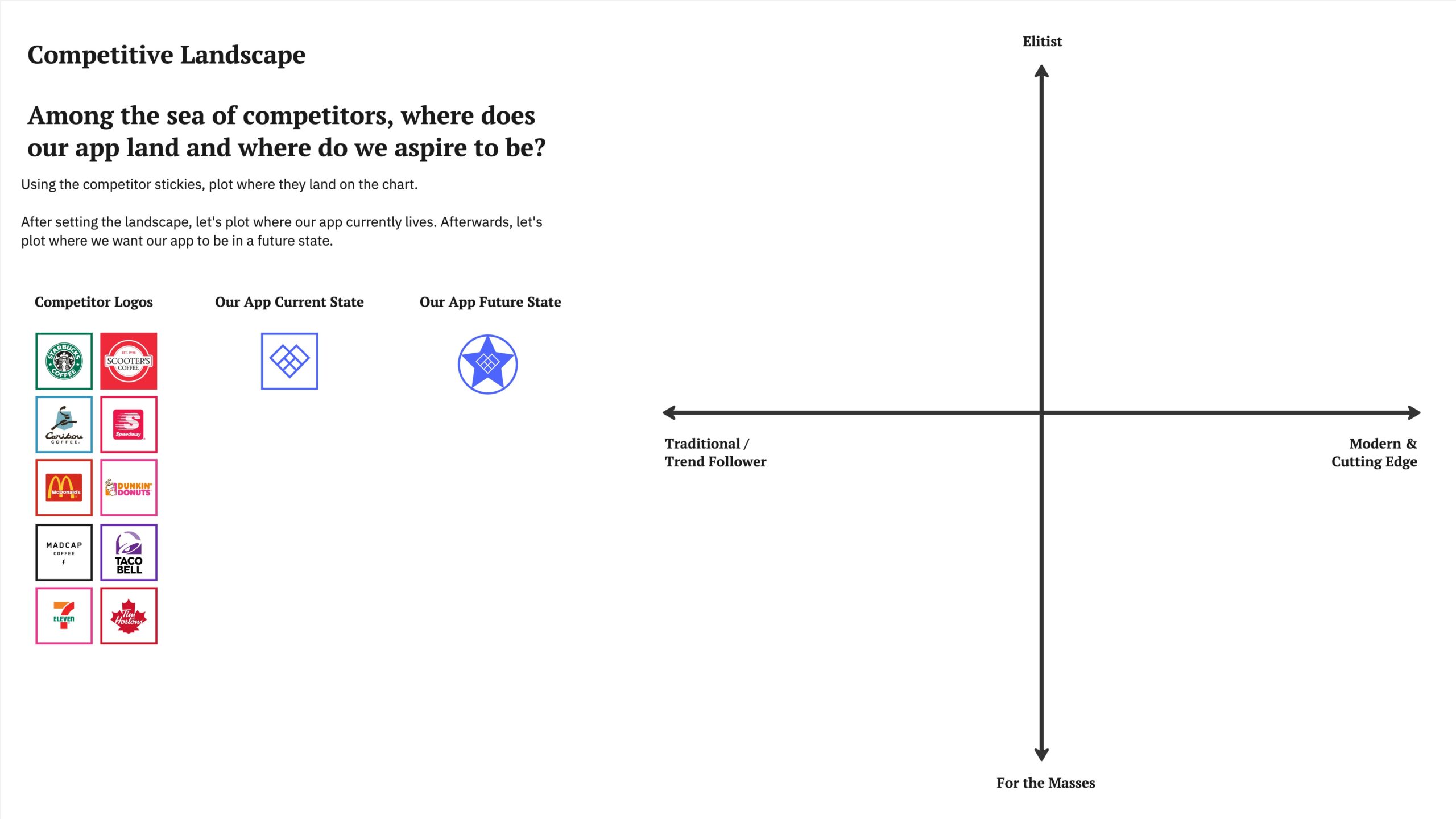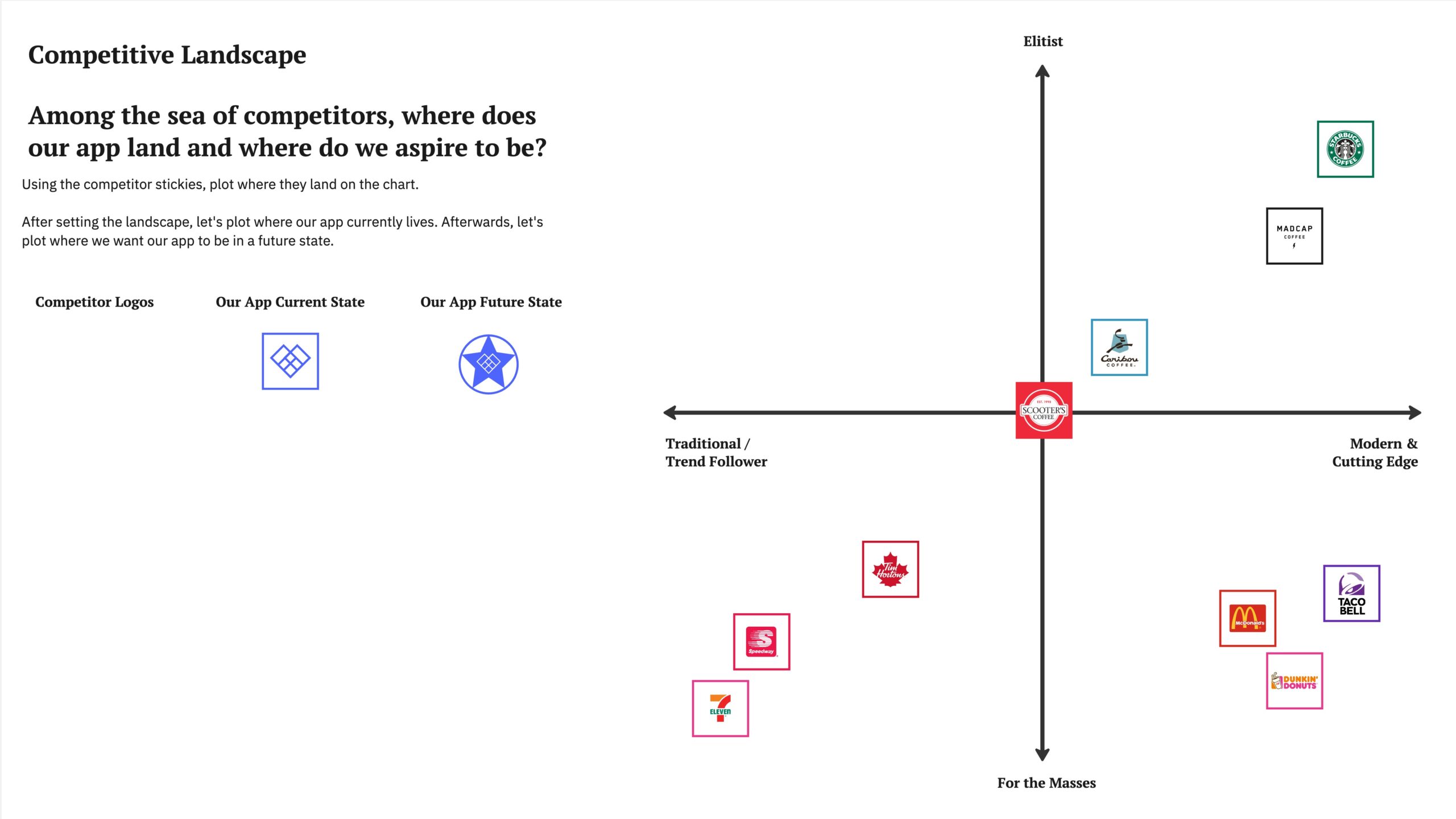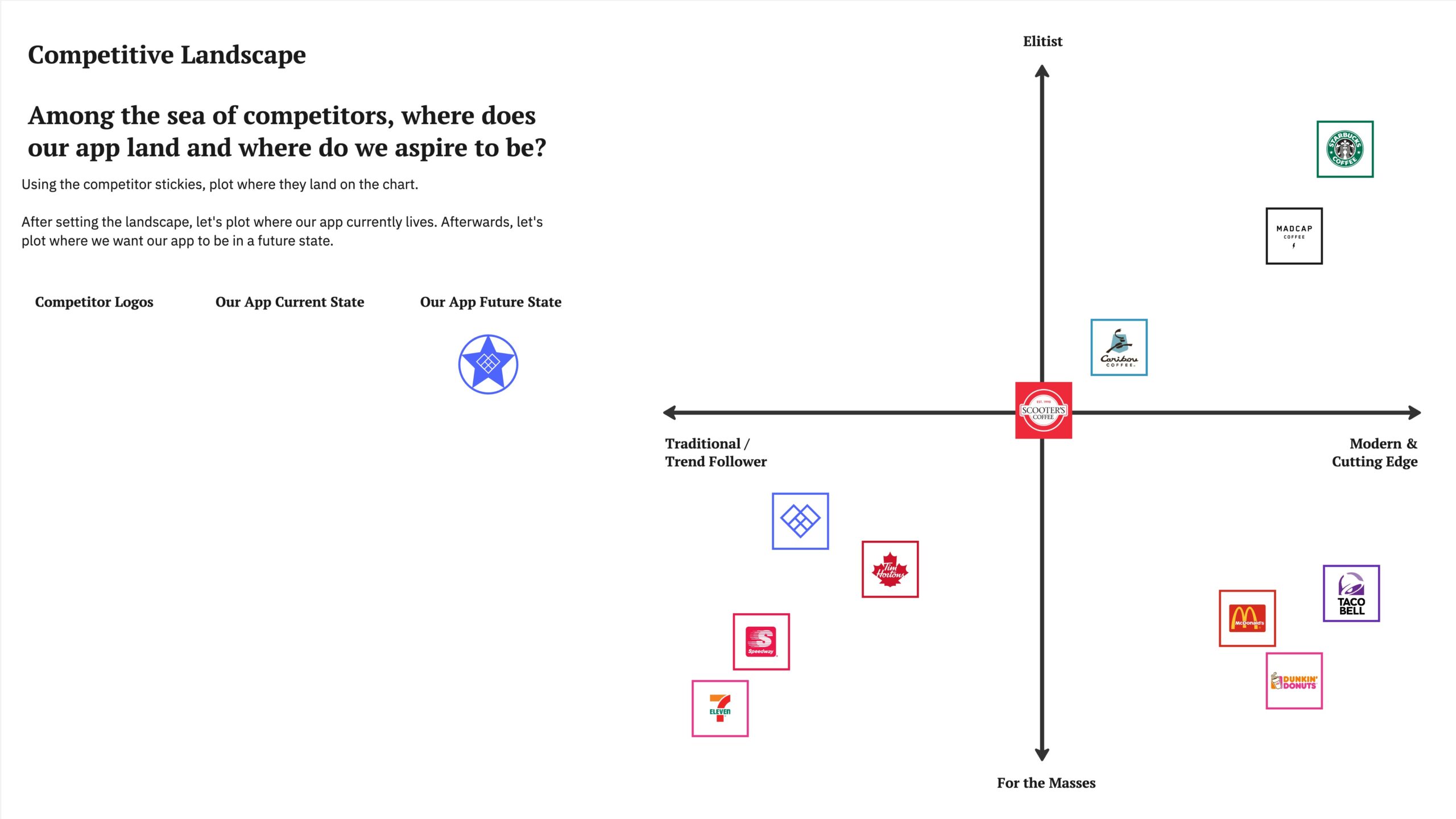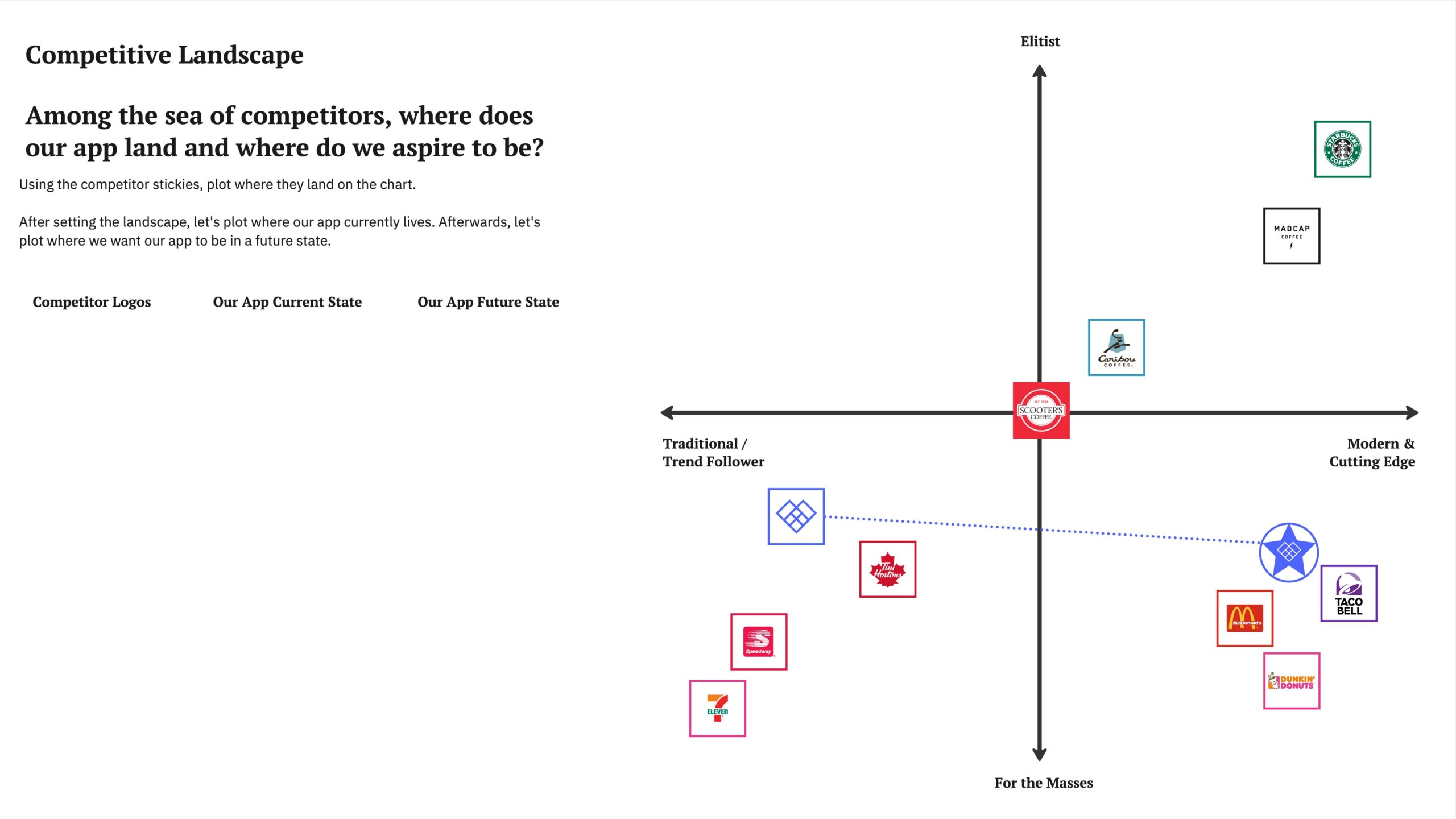So far in this series, we’ve talked about how simplicity helps teams stay focused, how to make design thinking more approachable, and how to map out who you’re designing for. Now, in this final post, we’re turning our focus toward your market.
This activity helps your team answer one big question:
Where does your brand stand today, and where do you want it to be once your product is out in the world?
We’ll answer that using a simple 2×2 matrix. It’s a visual way to map your competitors, your current brand position, and your ideal future state, all in one place.
Why This Matters
When you’re deep in the work of building a product, it’s easy to lose sight of the bigger picture. You might be thinking about features, bugs, and release dates, but not necessarily about where your brand fits in the broader landscape.
This is about zooming out. This exercise helps teams:
- See how competitors are positioned
- Understand how your brand is perceived today
- Align around a shared vision of where you want to be after launch
And maybe most importantly, it reveals the gap between where you are now and where you’re aiming to go. That’s where strategy starts to take shape.
Step 1: Set up your axes and competitor logos.

Start by choosing two dimensions that matter in your space. These could be:
- Price versus quality
- Feature-rich versus simple UX
- Innovative versus reliable
- Niche versus mainstream
There’s no one right answer. It depends on your product, your users, and your industry. What you’re looking for are two tensions that define your space and influence how people make choices. Draw them as axes on a large square, one vertical and one horizontal, and label each end clearly.
Before moving on, take a few minutes to gather competitor logos or names that your team believes are relevant. These might be companies you’re often compared to, aspirational peers, or even up-and-coming challengers. This will help ground the conversation in your actual experience of the market.
Keep the session visual and interactive. Use a large whiteboard or poster, print out logos, grab some sticky notes and markers. The goal is to create a shared mental model.
Step 2: Plot the competition.

Next, gather up logos or names of your competitors and start placing them on the matrix. Where does each one land based on the criteria you chose?
This is more about perception than hard data. Encourage open discussion:
- Why does the team feel Company A is seen as more cutting edge but for the masses?
- Why is Company B considered to be traditional?
This step helps surface assumptions, challenge them, and build a shared understanding of your space.
Step 3: Plot where your brand is today.

Now, place your own brand on the matrix as it stands right now. This is an honest look at how your product, your experience, and your messaging are coming across in the market, or how they would if you haven’t launched yet.
Expect some debate here. That’s actually a good sign. Differing perspectives can lead to deeper insight and better alignment.
Step 4: Plot your aspirational future.

Ask the team, where do we want to be in the next 12 to 18 months? Once the product is live, once users are engaging with it, and once we’ve learned from some real feedback, what’s our ideal position?
Mark that spot on the matrix too. Use a different color or icon to show that this point represents your goal, not your current state.
Now you’ll see the space between where you are and where you want to go. That’s the opportunity ahead.
So what do you do with this?
That visual gap becomes a powerful conversation starter. It gets the team thinking about what it will actually take to move from point A to point B.
- What needs to change in the product or experience?
- How are we talking about the product, and is that message landing?
- Are we entering an established competitive space or carving out a new one?
- What needs to happen on the team or within the company to support this shift?
This step brings everything into focus. You’re not just building features, you’re building a brand that fits into a larger story.
Final thoughts
This 2×2 exercise is a simple but effective way to ground your product work in the bigger picture. You’ll walk away with a clearer understanding of your competitive landscape, better alignment on your brand’s current position, a shared vision of your future state, and a solid starting point for strategic action.
It’s a great way to wrap up a design thinking series. You’ve looked inward at your users, your product, and your assumptions. Now you’re looking outward, aligning the team on what success really looks like in your market.
The post Simplicity in Design Thinking, Part 4: Your Competitive Landscape appeared first on Atomic Spin.



